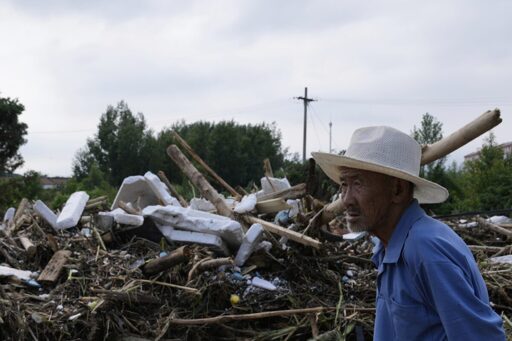Flooding from torrential rain in northeastern China has killed at least 60 people since July 29, according to Xia Linmao, the deputy mayor of Beijing, China’s capital city. The region hit hardest was the Beijing suburb of Miyun, where accumulated precipitation reached 543 millimeters (21.4 inches), nearing the annual average rainfall for Beijing, which is 585 mm (23 in). In Miyun, 31 people died in a nursing home impacted by the flash flood. Another 16 people died in Hebei province, which surrounds Beijing, and an additional 18 people are still reported missing. “I’ve never seen such ferocious floodwaters in my life,” Zhai Cheng’an, a 89-year-old resident of Taotiaogou, a remote village of Yanqing district in Beijing, told China Daily. Deputy Mayor Xia announced that all major roads will be restored by July 31 and that villages have been served with emergency water supplies, adding that local governments need to improve preparation and relief efforts for extreme weather. “Local governments lack adequate early warning systems for extreme weather, and disaster prevention plans are incomplete,” Xia said. More than 80,000 people have been relocated across Beijing. Meanwhile, in Shanghai, China’s most populous city, 1,200 kilometers (745 miles) south of Beijing, 283,000 people have evacuated coastal areas as Typhoon Co-May sweeps through eastern China. Chen Tao, chief forecaster at China’s National Meteorological Center, said the typhoon isn’t particularly strong but its slow movement could lead to dangerous levels of accumulated rainfall. In the first half of 2025, China’s emergency ministry reported that…This article was originally published on Mongabay
From Conservation news via this RSS feed


